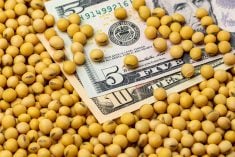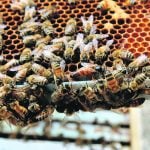I usually discuss weekly market activity regarding the feeder cattle market but cow-calf producers should sometimes take a step back and look at the macro environment for a longer-term perspective.
The U.S. Department of Agriculture’s cattle inventory report showed the 2012 calf crop down three per cent from 2011. Beef cows that have calved as of Jan. 1 were down nearly 900,000 head or two per cent from last year; heifers for beef cow replacement were up a meagre 100,000 head or two per cent in comparison to Jan. 1, 2011.
Needless to say, the U.S. cattle herd is still in contraction mode for the sixth consecutive year and there is no clear signal when this trend will change. The drought conditions in the U.S. are still ongoing so we will probably see another year of contraction in the cattle herd.
Read Also

U.S. grains: Soy futures post biggest monthly gain in nearly five years on China trade optimism
U.S. soybean futures climbed to a 15-month high and posted their biggest monthly gain in nearly five years on Friday following a rally fueled by the prospect of revived exports to China.
The corn and barley situation is historically tight and the market will be extremely sensitive to weather during planting this growing season. Until August, feed grains will be tight. However, with record U.S. corn acreage, there is potential for corn prices to drop under $4 during harvest, which is what most analysts are expecting at this time with average yields.
The Dow Jones industrial average (DJIA) closed above 14,000 on Friday, near the historical highs of 14,198 in October 2007. The recession is over, if anyone remembers. Money is still relatively cheap and there is a potential for a significant inflationary period over the next two years. Unemployment is poised to decline and consumer confidence to rise, which will increase consumer spending and beef demand.
I’m expecting record-high feeder cattle prices next fall. The market will start to move higher in the spring and continue a slow upward trend into December 2013. I feel there is a real opportunity for ownership of lightweight calves, bred cows and heifers, for expansion of the herd and a hedge against inflation.
— Jerry Klassen is a commodity market analyst in Winnipeg and maintains an interest in the family feedlot in southern Alberta. He writes an in-depth biweekly commentary, Canadian Feedlot and Cattle Market Analysis, for feedlot operators in Canada. He can be reached by email at [email protected] for questions or comments.












